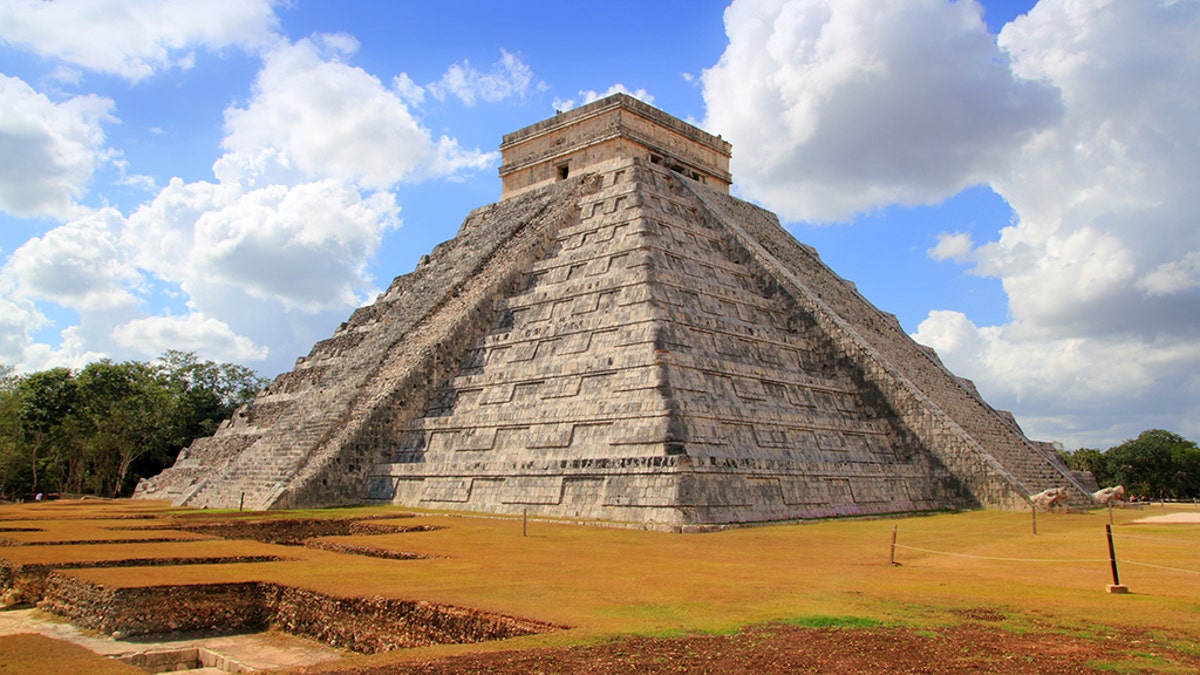
Chichen Itza Kukulcan Mayan Pyramid new underground excavation discoveries (LUNAMARINA)
The innovative Mayan empire — with its impressive temples, calendar and artwork — mysteriously collapsed between the 8th and 9th centuries, leaving many scholars to question how such a seemingly advanced peoples could essentially disappear.
For years, researchers pointed at wars, famine and the possibility of invaders taking over Mayan communities. It wasn't until the mid-1990s that archaeologists began pointing to a devastating drought that hit the community, located on what is now known as the Yucatan Peninsula in Mexico.
"If you have a society that becomes vulnerable, then many factors lead to its decline. In addition to the ecological problems, you must consider population pressure on the agricultural system, constant warfare, changing trade routes and the possibility of drought and other climatic factors," archeologist Jeremy Sadloff told The New York Times in 1995.
STONEHENGE MYSTERY SOLVED, SAYS BREAKTHROUGH SCIENTIFIC STUDY
A new study released in Science Thursday confirmed Sadloff's decades-old suspicion, and provided the first concrete data that reveals how serious the drought really was from 800 to 1,000 A.D.
With samples taken from the sediment deposited underneath Lake Chichancanab, scientists were able to confirm a 41 to 54 percent decrease in annual precipitation over the span of 200 years. During peak drought conditions, there was nearly a 70 percent rainfall decrease, according to the study. Humidity also declined between 2 and 7 percent during that time.
"This collapse is a well-cited example of how past climate change —in this case, drought — can disrupt a population," the study states.
BERMUDA TRIANGLE MYSTERY 'SOLVED,' SCIENTISTS CLAIM
Nick Evans, the lead author of the study and a graduate student at Cambridge University, told The Washington Post researchers studied layers of mud, clay, rock and other minerals found under the lake using isotopic analysis — a technique used to identify chemicals inside organic and inorganic compounds.
“Drought does have the potential to be a driving force for a lot of the issues that can cause civilization stress."
Evans and his colleagues studied various layers of the earth to look for clues of a drought, such as evidence of gypsum crystals.
"We reconstructed the past isotopic composition of water in Lake Chichancanab, Mexico, using a technique that involves isotopic analysis of the structurally bound water in sedimentary gypsum, which was deposited under drought conditions. The triple oxygen and hydrogen isotope data provide a direct measure of past changes in lake hydrology," authors of the study explained.
Now, researchers are trying to determine how much of an impact drought had on local agriculture.
“Drought does have the potential to be a driving force for a lot of the issues that can cause civilization stress," Evans told The Washington Post, adding that ancient civilizations didn't have the tools or technology we have today to combat severe dry spells.




















